
- Appointments
- Awards
- Books & Authors
- Committees
- Deaths
- Defence
- Economic
- Environment
- Finance
- Important Days
- International
- Miscellaneous
- National
- Persons in NEWS
- Places in NEWS
- Regional
- Reports
- Resignations & Retirements
- Science & Technology
- Sports
- October 2016 - Exams Resources
- Current Affairs - Quiz
- Current Affairs - Test
- Current Affairs - PDF
Current Affairs October 2016 - Technology
News 1 - India's latest communication satellite GSAT-18 successfully launched
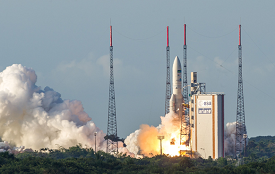
India's latest communication satellite GSAT18 was successfully launched on board 'Ariane-5 VA231' rocket from Kouru in French Guiana. The Master Control Facility of ISRO at Hassan in Karnataka took control of the satellite immediately after its injection into an elliptical geo-transfer orbit.
The satellite aims at providing telecommunications services for the country by strengthening ISRO's current fleet of 14 operational telecommunication satellites. GSAT-18 is the 20th satellite from ISRO to be launched by the European space agency and the mission is the 280th for Arianespace launcher family.
News 2 - Hubble Space Telescope detects Giant 'Cannonballs' Shooting from Star
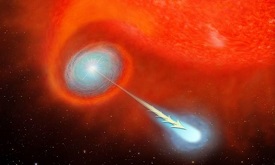
NASA's Hubble Space Telescope has detected superhot blobs of gas, each twice as massive as the planet Mars, being ejected near a dying star.
This stellar "cannon fire" or Great Balls of Fire (GBF) were observed near a red giant called V Hydrae, about 1,200 light years away from Earth. The plasma balls are zooming so fast through space that they would travel from Earth to the moon in 30 minutes.
News 3 - Indian researcher produces stable Perovskite Nanocrystal solar cells

Pune based researcher Abhishek Swarnkar from Indian Institute of Science Education and Research (IISER) has successfully produced a stable, high-efficiency, allinorganic perovskite nanocrystal solar cells. The new material has 10.77% efficiency to convert sunlight to electricity.
The research appeared in the journal "Science". These nanocrystals were found to be stable from 196-degree C to about +200-degree C. It also converted sunlight to electricity by producing a high voltage of 1.23 volts.
News 4 - Electroactive bandage developed by NASA to speed up wound healing

NASA has developed a high-tech electroactive bandage that creates an electric charge to help speed up the healing process of wounds. The bandage is made of an electroactive material that is stimulated by pressure of cell growth and body heat. The fibres of the guaze are made of electroactive material Polyvinylidene Flouride (PVDF).
The bandage would be very useful to military personnel wounded in the field as well as patients who have undergone surgery.
News 5 - Researchers at IISER use human hair to produce cheaper cathodes for solar cells
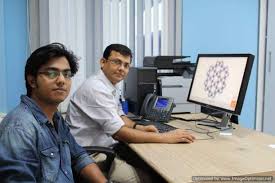
A team of researchers at the Indian Institute of Science Education and Research (IISER) in Kolkata have used human hair to produce cost-effective, metal-free cathodes for use in solar cells. The results have been published in the journal Carbon.
It has got high efficiency to convert visible sunlight to electricity. The cathode was found to generate high open-circuit voltage, which is at par with conventional platinum and activated carbon cathodes.
News 6 - Researchers develop self-powered UV photodetector
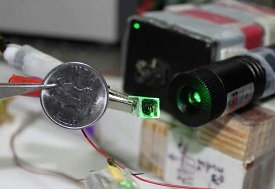
The researchers from the Indian Institute of Science (IISc), Bengaluru have developed a cost-effective, high-performance, selfpowered UV photodetector.
The self-powered UV photodetector can use the harvested optical energy for direct selfcharging of energy storage devices such as supercapacitor. It can also be used for operating electronic devices in the absence of external power source. The researchers developed the photodetector by integrating semiconducting vanadium doped zinc oxide (VZnO) nanoflakes with a conducting polymer.
News 7 - China successfully launched longest manned space mission
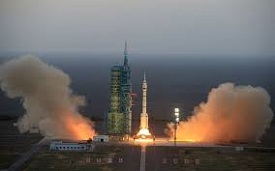
China successfully launched a spacecraft carrying two astronauts, in its longest-ever manned space mission. The 'Shenzhou-11' spacecraft was put into orbit by a Long March2F carrier rocket from the Jiuquan Satellite Launch Centre near the Gobi Desert.
The space lab was launched as part of China's efforts to set up its own manned space station by 2022, which will make it the only the country to have such a facility in service as the present in-service International Space Station retires by 2024.
News 8 - Protein rich rice variety developed by IGKV, Chattisgarh
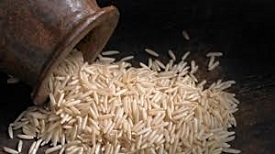
A protein-enriched rice variety has been developed by the Indira Gandhi Krishi Vishwavidyalay (IGKV) in Raipur. The newly developed rice variety has over 10 per cent protein content, which is three per cent more than what is found in any popular variety and has 30 PPM zinc content.
The new rice variety could potentially play a crucial role in fighting protein deficiencies among children, in the tribal-dominated Chhattisgarh.
News 9 - Tasmanian devil milks antibiotic resistance kills several deadly superbugs

Recent research has revealed that Tasmanian devil milk contains an arsenal of antimicrobial compounds that can kill some of the deadliest bacterial and fungal infections.
It has been found that milk can produce six different types of these antimicrobial compounds that kill bacteria responsible for food poisoning and pneumonia.
Research is under process to determine if antimicrobial compounds could kill the facial tumour.
News 10 - Orbital cargo ship arrived at the International Space Station
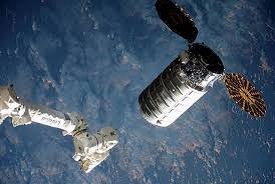
An unmanned cargo ship operated by the US Company Orbital ATK arrived at the International Space Station to deliver 2.5 tonnes of food and supplies to the six astronauts living in orbit. Three Russian cosmonauts, two American astronauts and one Japanese astronaut are currently staffing the space station.
The cargo ship was launched on October 17th from NASA's Wallops Flight Facility in Virginia. It will remain attached to the space station until November. Astronauts will fill it with trash before sending it off to burn upon reentry to Earth's atmosphere.
News 11 - China's space lab launches micro-satellite, Banxing-2
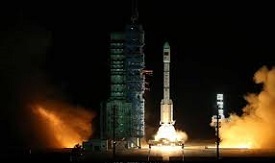
Chinese space lab Tiangong-2 orbiting the Earth with two astronauts on board has successfully launched a micro-satellite Banxing-2 that will take photographs of Tiangong II and the Shenzhou 11 spacecraft, which docked with the lab.
The Banxing-2 weighs 47 kilograms and has a series of visible light cameras, including a 25megapixel camera and wide-angle imagers. It also has an infrared camera that is temperature-sensitive. The micro-satellite has three solar panels.